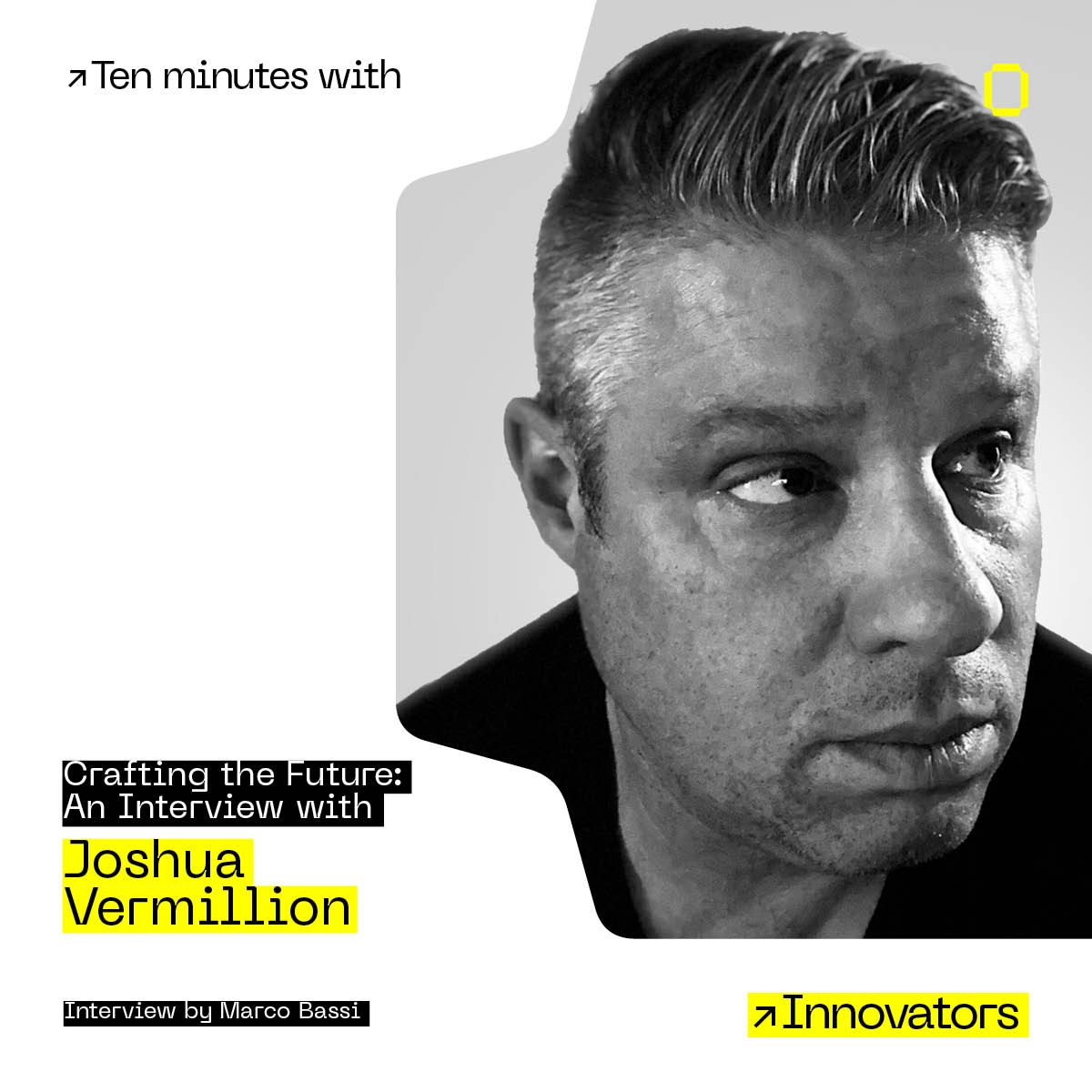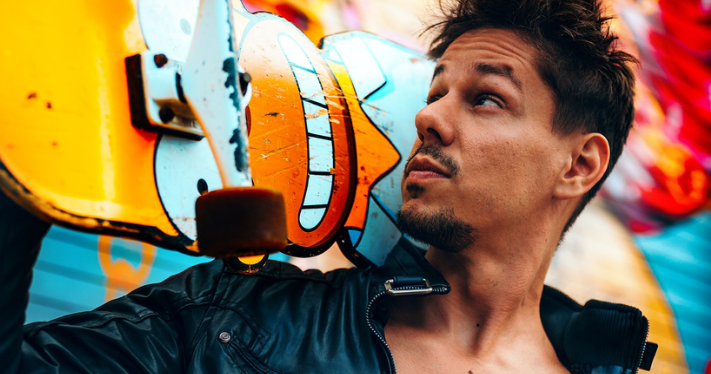Joshua Vermillion
- January 3, 2024
- 11:52 am

In the ever-evolving tapestry of architectural innovation and trans-disciplinary design, one name shines brightly—Joshua Vermillion. An Associate Professor and the Graduate Coordinator in the School of Architecture at UNLV, Joshua is not merely an educator; he is a maestro orchestrating the harmonious convergence of technology, industry-informed research and development, and community engagement.
Introducing VIN + OMI, a dynamic duo of fashion designers who epitomize excellence and innovation in the modern fashion world. With their exceptional talent and unbridled creativity, VIN + OMI have quickly gained recognition and admiration within the industry, transforming runways into captivating works of art. Get ready to be mesmerized by their unique vision and extraordinary designs.
Intro:
In the ever-evolving tapestry of architectural innovation and trans-disciplinary design, one name shines brightly—Joshua Vermillion. An Associate Professor and the Graduate Coordinator in the School of Architecture at UNLV, Joshua is not merely an educator; he is a maestro orchestrating the harmonious convergence of technology, industry-informed research and development, and community engagement.
Embarking on a multi-year odyssey, Joshua has carved a niche in the realm of “Digital Craft,” where his endeavors span three pivotal realms: digital information as a medium, as material, and as a method. His research, pedagogy, and practice weave together the intricate threads of computational, parametric, and algorithmic design, digital fabrication tools, and techniques, as well as the nuanced exploration of situated technologies, sensing, responsive systems, and robotics.
As a globetrotting luminary, Joshua has graced renowned conferences such as ACADIA, SIGRADI, eCAADe, ACSA, NCBDS, and ARCC, leaving an indelible mark on the discourse of architecture and design. His scholarly contributions extend beyond the podium, encompassing peer-reviewed research in the International Journal of Architecture Computing and the co-authored and edited book, “Digital Design Exercises for Architecture Students,” a testament to his commitment to shaping the future of architectural education.
In the crucible of academia, Joshua’s impact transcends the classroom. His students, guided by his vision, have clinched design awards and competitions, a testament to his dedication to fostering excellence. Beyond the academic realm, Joshua’s collaborative works have graced the pages of prestigious publications, from WIRED to ArchDaily, showcasing the resonance of his innovative designs in the broader architectural landscape.
In 2017, the UNLV School of Architecture recognized Joshua’s unwavering commitment by bestowing upon him the Fielden Medal for contributions of excellence to architectural education—a testament to the lasting impact he has made in nurturing the next generation of architects.
As we eagerly anticipate the unfolding of Joshua’s narrative, we extend our heartfelt admiration and best wishes for his continued success. We look forward to welcoming him to Ibiza this October for the second edition of Lotus, where his brilliance will undoubtedly illuminate new horizons in the world of architecture and design. May his journey continue to inspire and redefine the boundaries of digital craft, leaving an indelible legacy for aspiring architects worldwide.
Intervista:
Given your expertise in parametric design and digital fabrication, could you share some recent advancements or trends in these fields that are particularly exciting or promising for the future of architecture?
The biggest trend with design technologies right now is the use of AI in the creative process. We are seeing a number of new tools hit the market weekly, and an equal number of interesting ways that designers and architects are incorporating these tools into the design process. With machine learning, I predict that architecture will fundamentally change while these new tools pose both significant challenges and significant opportunities for the profession. While it is impossible to see into the future to tell exactly what is going to happen, its an exciting time to explore new AI-augmented ways of working and designing and this has been my primary work over the past year and a half. I truly believe that we creatives have to come to creative terms with AI, and such a process involves testing and experimenting with these tools in order to have a more informed outlook on how design and technology evolve together.
Your research includes exploring situated technologies and robotics in architectural applications. Can you provide an example of a project or concept where these technologies have been effectively integrated into architectural design to enhance user experiences or functionality?
Yes, I’ve always been fascinated by how we can use digital technologies creatively and that includes questions like, “how do we embed technology into the built environment—buildings and the public realm in between—in order to make our communities smarter and more adaptive. I’ve prototyped and installed a number of spatial installations with students and colleagues that demonstrate these principles in a way that gets people to interact with the environment around them. Here are some example projects that I’ve built with teams:
You co-founded i-MADE, an institute focused on collaborative projects between students, faculty, and industry partners. What were some of the most impactful outcomes or lessons learned from this initiative, and how has it influenced your approach to teaching and research?
While the founding of the institute was quite a while ago, I learned a number of important things during its formation. Probably the most important thing I realized is how crucial the role of higher-education can be in working with industry and community partners. Design students are inherently curious, entrepreneurial, and driven. They want to work on real problems with impact and doing so while networking with the outside world. Our institute was able to perform very helpful research and development projects around design, fabrication, and materials with local and regional industries. And at the same time, industry began to understand how many opportunities there were in working with a university. Higher education houses a unique blend of expertise, skills, and knowledge that are needed as more of the world shifts to the information economy. And in a world that is starting to transform and change quickly from technologies such as AI, universities are critical to giving us tools to question and debate how to use these tools: ethics, critical thinking, cultural awareness, empathy, labor, social skills—all of these are part of the domain of education. We need universities, now more than ever, to pivot and help us address these issues even more directly.
Your collaborative work has been featured in various media outlets. Could you share an example of a project that garnered significant attention and explain what made it unique or groundbreaking in the field of architecture and digital craft?
The most recent example of this is a recent magazine cover and fashion editorial that I helped create for Harper’s BAZAAR Serbia. Returning to my work with AI, this was the first (as far as I know) hybrid photography / AI visuals for this multinational fashion magazine brand. The images blended traditional photography of a model into a series a fictional settings—landscapes, architectures, and props—that I generated in Midjourney. The project speaks to the opportunities created by AI as a new medium—the project was put together by a inter-disciplinary team consisting of photographer, models, fashion brands, architecture, writing and editing, etc.

